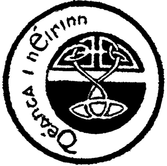We’ve been looking at the history of intellectual property in our trivia posts over the past months, and looking at how it evolved in Ireland. We’d like to share a bit more here on the history of IP in Ireland, for those of us who are history buffs as well as IP experts.
Patents and trade marks in Ireland have a long history, pre-dating the Republic to the time when they were governed by the United Kingdom. In time, Intellectual Property became increasingly regulated with the establishment of the Irish Patents Office, since renamed the Intellectual Property Office of Ireland.
Patents
History of patents in Ireland
There are several notable Irish inventors who have made important contributions towards science and innovation. During the sixteenth and seventeenth century, while Ireland was still under British rule, the earliest form of patent was in the form of a privilege which was granted by the Crown to subjects. In fact, the term ‘patent’ comes from these early privileges granted by the Crown in the form of letters patent.
Unsurprisingly, these privileges were not subject to formal checks and balances and a great deal of discretion was left to the Crown. In effect, these early patents were frequently granted for inventions already being performed by others. Several criticised the patent system and the Crown’s right was ultimately challenged in court and resulted in parliamentary intervention which brought about the 1623 Statute of Monopolies which prohibited the grant of patents by the Crown. Patents went from being primarily a Crown prerogative to become a statutory right. This put the system in a better position for reform.
Evolution of the patent system
The patent system that exists today has been derived from developments that took place in the nineteenth century. The registration process, as well as many of the legal concepts which we follow today, took shape during this period and were rectified by the British Patents Designs and Trade Marks Act 1883. Once Ireland became a Free State in 1922, all patent and trade mark rights which were processed through the British Patent Office were no longer effective in the Republic.
In 1927, the first Irish legislation to deal with aspects of intellectual property was passed, the Industrial and Commercial Property (Protection) Act, 1927. This Act established the Industrial and Commercial Property Registration Office and former British registered inventions and trade marks could be re-registered. Each patent had an identifying number as they do today. The first patent number started at 10,001 and the oldest registered patent in Ireland entitled “Starting Cages for Racing Dogs and the Like” registered in 1929 and was granted to Hannah Mary Smith.
The first patent application to be processed in Ireland, entitled “Traffic Signals for Road Vehicles” and was filed by Mrs Clara Boag. It was showed two little signs with pictures of hands on them which acted as mechanised hand-signals. Before, one would indicate whether a car was turning left or right by hand. So this invention which worked by springs and levers, would pop out to show when the car was turning.
1929 also brought a change in the law, the creation of the Patent Agents Register made it compulsory for Patent Agents to have an office in Ireland and to be resident in Ireland. The Irish Patents Office was established for the processing of applications for patents, trade marks and designs. The Office was located at 45 Merrion Square, Dublin 2, between 1930 and 1998, until it relocated to its current location at Hebron Road in Kilkenny. Maclachlan and Donaldson was at the time located at 47 Merrion Square.
The modern patent system
The Patents Act 1966 introduced further improvements and specifications as to what can be the subject of patent protection. The delicate nature of this granted monopoly in the area of science is always scrutinised and therefore, continuous amendments have taken place and will keep taking place to have a fairer and streamlined system which rewards inventors on the one hand and allows a sufficient corresponding benefit to the public. The 1966 Act for instance, improved the position of inventors of chemical products or substances intended for food or medicine by extending the protection to such products or substances.
The Patents Act of 1992, still in force, replaced the 1966 Act and introduced several procedural and substantive changes which enabled Ireland to ratify the European Patent Convention (EPC) which allowed the co-operation between European States to protect inventions. The same Act brought the ratification of the Patent Co-Operation Treaty (PCT), to streamline patent applications, filing and conducting searches for applicants filing patents in several countries.
Overall, the new trend in the patenting process in Ireland and the EU today is to circumvent legislative obstacles to patent protection. It is increasingly recognised that patents play a crucial role in finding innovative solutions in the areas of climate change, food security and improving access to medicine.
Next we will look at the history of Trade Marks in Ireland, casting further light on the history of MacLachlan & Donaldson itself too.


